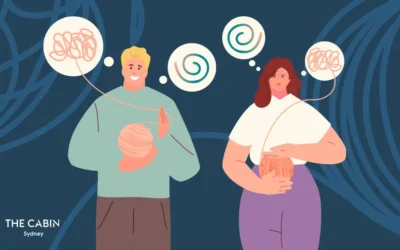Exercise is a good thing, to be sure. It boosts energy, mood, and confidence and is integral to maintaining overall health. But for some, commitment to working out can turn into a dangerous obsession that results in injury and disrupts relationships. Here is how to tell an exercise addiction.

Even nectar is poison if taken to excess. ~Hindu Proverb
Exercise is a good thing, to be sure. It helps our energy, our mood, our physique, our confidence. Studies have shown that just ten minutes of physical activity reduces anxiety, anger and depression. It helps treat chronic conditions like arthritis, heart disease, diabetes, high blood pressure or difficulty with walking and coordination. It wards off stiffness and aches and pains and increases strength and endurance.
It helps tremendously with recovery. It increases longevity. It is a necessary part of a healthy life, yet even this beneficial activity can become dangerous when carried out in excess.
How much exercise is too much?
Exercise addiction affects 0.3 to 0.5 percent of the population. Regular exercise is healthy, but exercise addicts take on an obsession with exercising and burning off calories, often missing out on other important obligations in order to do so and repeating an activity to the point of self-injury, disregarding their body’s protests.
Says Ian Cockerill, a sports psychologist at the University of Birmingham, England: “Healthy exercisers organize their exercise around their lives, whereas dependents organize their lives round their exercise.”
Exercise addiction is one of many behavioural addictions. It is a similar psychological condition to drug addiction and is sometimes linked to eating disorders – about half of exercise addicts have an eating disorder, while 15 to 20 percent are addicted to substances as well. According to psychiatrist Diane A. Klein, MD, of Columbia University’s College of Physicians and Surgeons, some people are addicted primarily to exercise, while for those with eating disorders, over-exercising is a way to compensate for calorie consumption in an extreme effort to control their weight.
Beyond Over-Acheiving
Exercise addiction, like all addictions, stems from a lack of self-worth – from reaching for something external to fill a void within ourselves. However, exercise addiction is unique in that, while substance addiction is seen as unlawful or taboo, exercise addiction is actually driven by a desire to fulfil internalised expectations of mainstream society – expectations to be thinner, better looking, in impossibly perfect shape. And of course, social media plays a part, especially as fitness culture becomes more and more pervasive – dreams of looking like an Instagram-filtered hardbody and positive reinforcements in the form of Facebook likes on posts boasting fitness achievements only serve to stoke the flames of this fat-burning obsession. Says Diane A. Klein, MD, of Columbia University’s College of Physicians and Surgeons, because exercise and physical beauty are so highly regarded in society, “For people driven to achieve, to be perfectionists, and to be in optimal health, it’s kind of understandable that they become excessive.”
Says author and self-admitted exercise addict Katherine Schreiber, “Working out grants me the sense of control and confidence I’ve sorely lacked in my life outside the gym, as well as the reassurance that I’ve done something to render myself ‘worthy’ of others’ admiration and attention. Feeling better about myself now requires at least two or more hours of running, lifting, squatting, lunging, or vinyasaing. My exercise dependence has brought me more injuries than health boosts, and it’s actually amplified my anxiety. It’s also forced me into an isolated status that is anything but as pretty, impressive, or empowering as it may appear.”
Lisa M. of Massachusetts, USA, says she lost relationships, missed out on holiday gatherings, weddings and special occasions with her loved ones because of her obsession with going to the gym. At 167cm and 51 kilos, Lisa has osteoporosis in her spine and hip and has not menstruated in six years. Says Lisa, “Every aspect of my life was dictated by exercise and food and the need to control it all. I worked so hard to be healthy, but I’m not. And I did this to myself.”
While it is a great confidence-booster to see results from working out, there is a difference between commitment to a healthy lifestyle and obsession with one.
Who is at risk of becoming addicted to exercise?
Extreme exercise tends to appeal to people who feel the need for control in their lives. While risk factors have more to do with personal characteristics than profession, and the addiction afflicts non-athletes just as much, driven exercise often takes the form of running or bodybuilding, in part because these are solitary pursuits with readily observable results. Some runners begin to become addicted to the “runner’s high” caused by endorphins released during high-intensity activity. Some people become emotionally invested in this feeling, only to crash when they come down from it.
Psychiatrist Alayna Yates, MD, a professor emeritus at the University of Hawaii, has seen about 100 people she describes as “obligatory runners.” Says Yates, ““We need people like this, but we need to help them diversify. These people are locked into their regimes. They eat one meal a day, or eat exactly the same foods at each meal every day. They measure everything — their caloric intake, how much starch they’re eating. They’re overly focused and overly serious about sport and it messes up the rest of their lives. There isn’t time or room for relationships. They stop going to parties. They go to bed at eight so they can get up at four and run. There are divorces.” Exercise addiction often affects high-ranking professionals, as addicts tend to be overachievers who feel pressured to succeed.
Warning Signs of Exercise Addiction
According to the Exercise Addiction Inventory by Mark Griffiths, behavioural addiction specialist at Nottingham Trent University, the following signs are typical of behavioural addiction:
- Salience — Exercise becomes the most important activity in an addict’s life, completely dominating their thinking, emotions and behaviour.
- Mood modification — Exercise produces mood changes such as stimulating highs or mental numbness or escape.
- Tolerance — Addicts require increasing amounts of activity in order to achieve their desired effects.
- Withdrawal symptoms — Decreasing or stopping exercise results in discomfort, irritability, shakiness and other classic withdrawal symptoms.
- Conflict — Exercise obsession creates conflict in addicts’ relationships as it begins to take priority over other work, family and personal obligations.
- Relapse — Exercise addicts may respond to triggers by reverting back to the same patterns of activity, even after long periods of normalcy.
Exercise addicts become constantly preoccupied with their workout routines and energy intake, often weighing themselves several times a day, counting calories and adhering to their workout schedules in an extremely rigid manner.
They feel guilty about not exercising enough, planning workouts far in advance and working out at an intense pace relentlessly. This often results in injuries, as they overexert themselves and fail to listen to their bodies.
Says Marilyn Freimuth, Ph.D., psychologist and author of Addicted? Recognizing Destructive Behavior Before It’s Too Late, “When you start to lose control over a behavior — when you find yourself routinely exceeding a pre-planned limit or repeatedly spending longer than you intended doing it — that’s a key sign you’re addicted.” Addicts may even display physical signs of anxiety such as shortness of breath and racing pulse in response to missing a workout session.
“A lot of people who have a healthy attitude towards exercise, choose to become trainers, or work at a gym, and that’s fine,” says exercise psychologist Heather Hausenblas, Ph.D. “It’s when exercise becomes all consuming — when you start losing friends, forgoing social activities or reneging work opportunities — that your workout schedule becomes cause for concern.”
Getting Help for Exercise Addicts
Process addictions like exercise addictions can be hard to spot in yourself or a loved one. They cause chemical changes in the brain that require psychological treatment to overcome and are hard to do on your own. At The Cabin Sydney, we offer a complete recovery programme through our unique Recovery Zones treatment programme which is based on an ‘all addictions’ treatment model. It is also specially designed to treat addictions in which abstinence is not possible (food, sex and internet addiction). Not all addiction treatment centres in Sydney are equipped to deal with process addictions, focusing solely on substance addiction instead.
Located in the heart of the city, The Cabin Sydney offers outpatient programme schedules that can fit even the busiest of lives. With flexible hours, clients are able to stay committed to work and family responsibilities while getting the treatment needed to combat addiction. Our certified addiction specialists have treated all types of process addictions successfully, and take your recovery seriously. Met with discretion and privacy, clients will find that treatment at The Cabin Sydney fits well into their lifestyle. For those who have families affected by addiction, family counselling is also available. If you believe your exercise obsession is taking over your life, contact us today to find out how we can help.


